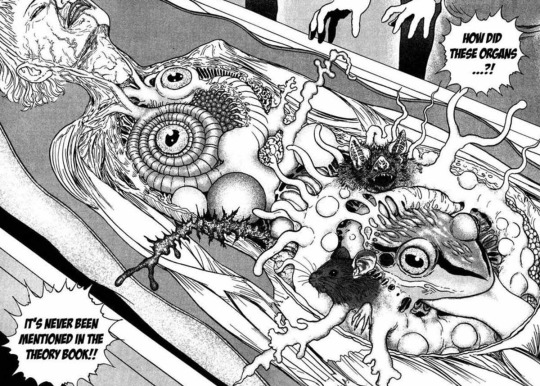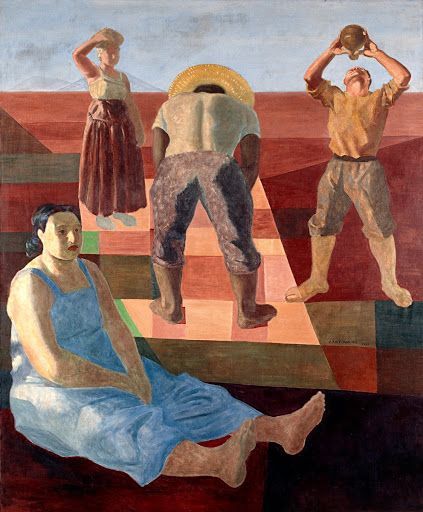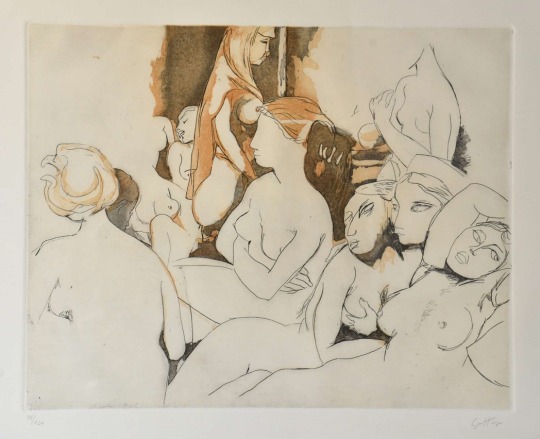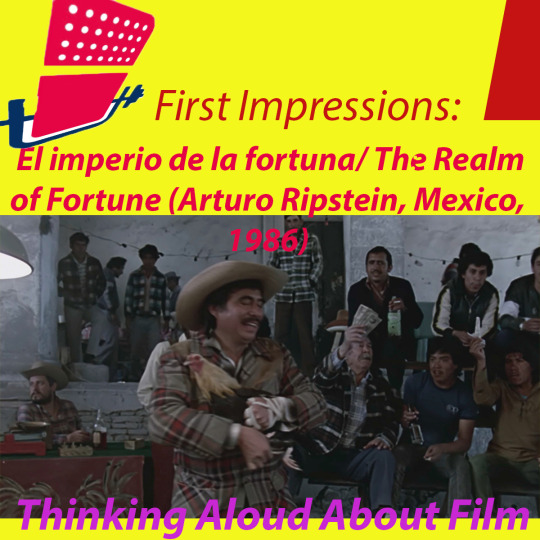#neo realism
Text







Michelangelo Antonioni, Red Desert, 1964
332 notes
·
View notes
Text

Anto Carte (Belgian, 1886-1954) • Mélancolie • 1921
#art#painting#fine art#art history#anto carte#belgian artist#oil painting#narrative painting#neo realism#figurative painting#expressionism#pagan sphinx art blog#art blogs on tumblr#20th century european art
32 notes
·
View notes
Note
what if. animemorphs.
Okay, picture Akira's approach to transformation sequences.

Now picture Akira if Junji Ito had done all the art.

There it is: Anime Animorphs!
#animorphs#anime#gore#body horror#blood#i do wonder if k.a.a. et al ever saw akira#because everyone talks about now neo tokyo influenced blade runner#but no one talks about how they took human transformation to a never-before-seen level#and were like 'what if we committed to the realism in sci fi concept so hard you never sleep again?'#and i can respect that
52 notes
·
View notes
Photo

Yoshitomo Nara
Sleepless night (Cat). 1999
#yoshitomo nara#neo-expressionism#children portraits#fantastic realism#pop art#modern art#japanese artist#private collection
138 notes
·
View notes
Text

BREAKING NEWS! Oarfish faces the wrath of Casa De Neo
#hlvrv#neo bushnell#swap hlvrv#m scribbles#FUN FACT! Clownfish can safely touch anemones without being stung! Oarfish? NOT SO MUCH...#I couldn't squeeze it into this piece but just know clownfish Neo totally has a funky stripe pattern that looks like a stylised skull#AND CASA DE NEO IS A MAGNIFICENT SEA ANEMONE#They come in blue (:#I also totally fudged the sizes of these two fish BUT LISTEN! Freenell is worth sacrificing realism. AND BESIDES#the rest of my hlvrv fish list makes up for it I promise#< BING BING BING that's the thing from that post I mentioned super briefly. I think someone asked about it?? If so. now you know!
84 notes
·
View notes
Text

some cortex model studies + doodles bc i wanna draw him better
#i love drawing him but honestly struggle with his face so much#it's hard to balance between his sharper and softer features. if that makes sense#like he has a lot of sharp features (nose/jawline/beard) but also has a slight babyface going on at certain angles/expressions#also it's so hard translating his nose shape into semi-realism bc like. on the model the bridge is super low#so on the model his nose is small low AND slightly hooked and it's hard to translate it?? god i really hope i'm making sense#sorry rant over i just studied the model a lot lol#crash bandicoot#neo cortex#dr neo cortex#doodle#my art#partial nudity#//the fullbody pose looks super weird bc of the labcoat lol. it's a hip tilt and looked good before the clothes💀
52 notes
·
View notes
Text

“(Magnani was) an ordinary Roman who was anything but ordinary. Magnani was a volcano, a tempest, a devastating performer who seemed to live and breathe her art and whose best performances would rank among the most vivid and immediate and emotion-rich ever filmed. She was born in Rome in 1908 (and would die there in 1973), and she was a living symbol of the city: its she-wolf, its spirit goddess, the voice of its streets, the face and body of its native population … The piazzas of Rome may have been filled with women like Magnani but on screen, particularly among leading ladies, there was nobody to compare. She would never be mistaken for a beauty pageant contestant or some producer’s girl on the side: she was full-bodied, shaggy-maned, often slightly disheveled, with a long nose and a tendency to sport bags under her eyes. She projected no vanity and few pretenses. But she had a raw, titanic talent, especially for screen acting, where the camera could get close in on her and reveal her wondrous ability to channel the disparate emotions of a moment.”
/ From Dolce Vita Confidential: Fellini, Loren, Pucci, Paparazzi and the Swinging High Life of 1950s Rome (2017) by Shawn Levy /
Died on this day fifty years ago: the fiercely sensual, temperamental and magnetic earth mother of Italian cinema and Italy’s single greatest actress, Anna Magnani (7 March 1908 - 26 September 1973). As John Waters concludes, “She was earthy. God knows she was earthy!”
#anna magnani#earth mother#she wolf#italian cinema#italian actress#european art cinema#lobotomy room#mamma roma#fierce#italian neo realism
19 notes
·
View notes
Text
im thinking of trying to make myself draw differently.....
#idk i feel like i can make my art more evil and fucked up and cool but in a realistic detailed fucked up kinda way#iykwim.... like it feels too cartoonish i want more realism with some abstractism YKWIM....... like#sigh... i want it to be like my neo metal sonic sketch i made#women.....#912
4 notes
·
View notes
Text

2 notes
·
View notes
Photo

Maximilien Luce - Factories Near Charleroi, 1894.
53 notes
·
View notes
Text

Menino com Pássaro, 1957
Candido Portinari
25 notes
·
View notes
Text

Cândido Portinari (Brazilian, 1903-1962) • Colheita de Café (Coffee Harvest) • 1951
#art#painting#fine art#art history#cândido portinari#brazilian artist#20th century latin american art#south american art#neo realism#modern art#figurative art
21 notes
·
View notes
Photo

Charlotte from Samurai Shodown streamed by LordBBH
#neo geo#SNK#samurai shodown#Samurai Spirits#games#video games#art#textures#castle#ruins#bricks#watercolor#gouache#mixed media#ink#artists on tumblr#charlotte#magical realism
21 notes
·
View notes
Photo

Renato Guttuso
Omaggio a Ingres. undated
#renato guttuso#printmaking art#etchings#figurativo#neo-realism#modern art#italian artist#tribute art
85 notes
·
View notes
Text
Thinking Aloud About Film: El imperio de la fortuna/ The Realm of Fortune (Arturo Ripstein, Mexico, 1986)
Dionisio (Ernesto Gómez Cruz) lives with his mother in a one-room hut, scraping a living as a town-cryer. He’s at cock-fight in a village fair and is given a bloodied rooster as a tip. Dionisio heals him and begins a career. The innocent naïve peasant is transformed into a leading gambler, marries a beautiful singer (Blanca Guerra), who brings him even more luck. But in his single-minded pursuit…

View On WordPress
#Arturo Ripstein#Blanca Guerra#El imperio de la fortuna#Ernesto Gómez Cruz#Italian neo-realism#Juan Rulfo#Magical Realism#Mexian Cinema#rise-and-fall narratives#Scarface#The Realm of Fortune
3 notes
·
View notes
Text
Ladri di biciclette (Bicycle Thieves) (1948)
A man needs his bicycle to work a job to support his family but when it’s stolen he hunts across the entire city to recover it while the money slowly runs out.
This film is heavy with social criticism, at some point satirical but largely sticks to being pure representation of social and fiscal unfairness. The realism worked well since even the fabricated parts of the plot like contacting the police rang true and any audience member across the countries and decades can attest to having heard of similar occurrences. The movie also exposes the poverty in every area of life from needing one’s own tools for work to religious scams.
There was an uncomfortable scene with child abuse that the protagonist doesn’t really make up for and excuses his own bad action by blaming his victim and they move on as though their relationship is repaired. The wife and mother doesn’t get much of a role as she disappears after a short while and doesn’t come back for the entire second half of the film so it’s unclear what she’s doing all that time or how she’s affected.
Father ans son serve as dual main characters and their relationship is the focus on many scenes even as the main plot progresses. This family depiction makes the concluding scenes far more understandable. The Italian community is portrayed as a network of friends and family, however their failures are explored as they unquestioningly protect criminal relations and form immediate mobs to punish outsiders, not to mention all the shouting.
It’s required by a neo-realist structure that the story end in a likely way so this means it’s necessarily depressing and unsatisfying, such is the lot of underclass life. The subtext of the film was largely lost on international audiences with an inability to understand irony as they voted for it to receive multiple awards and then picked the worst parts of the film to build a society from.
5/10 -Can’t find a better example of average-
-The scene which scared American censors the most was the public urination scene.
#Film#Review#Ladri di biciclette#Bicycle Thieves#1948#Crime#Neo-realism#Italian#World Cinema#JasonSutekh
4 notes
·
View notes